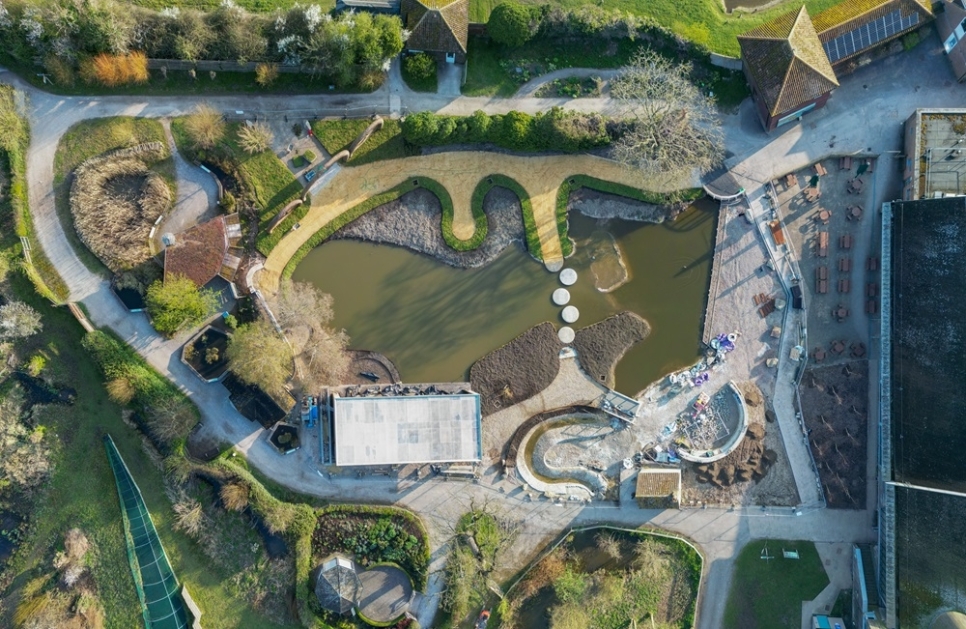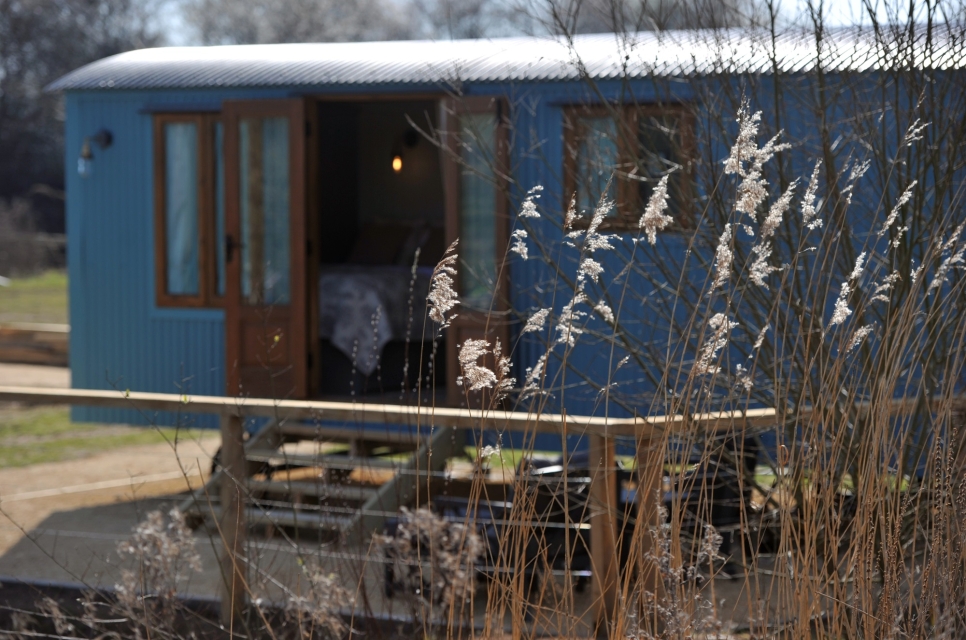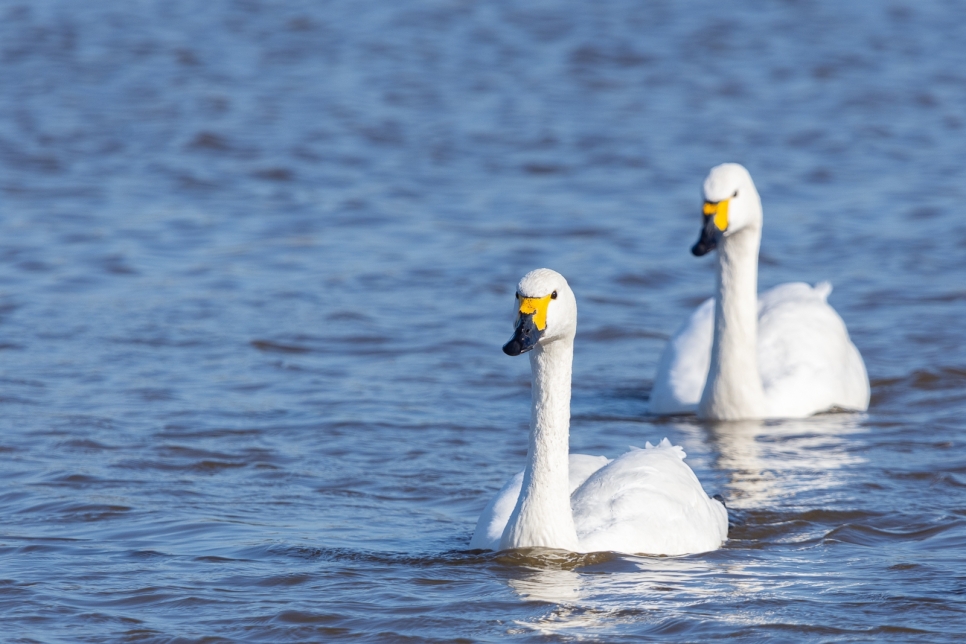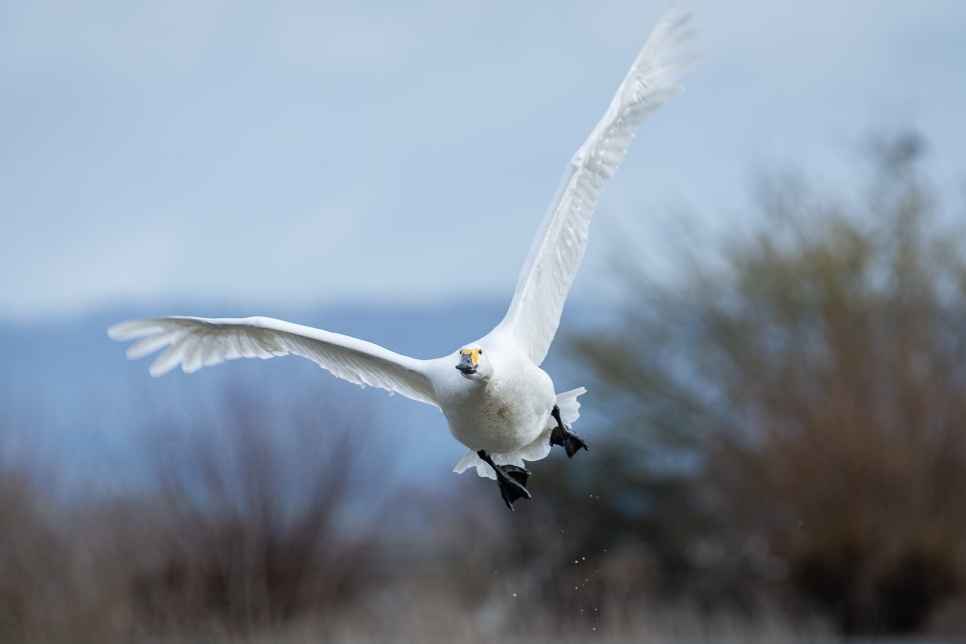Slimbridge sees most successful breeding year for threatened Bewick’s swans since 1966!
This winter we have so far seen a total of 128 Bewick’s swans arrive on the reserve. 33 of these 128 swans have included juveniles, making it the most successful breeding year since 1966!
This winter we have so far seen a total of 128 Bewick’s swans arrive on the reserve and 33 of these 128 swans have included juveniles, making it the most successful breeding year since 1966!
The arrival of Bewick’s swans is spurred on by the onset of colder weather on the continent, north-easterly winds, and their need for access to ice-free wetlands. The swans travel an epic 3,500km journey from Arctic Russia to the comparatively warmer weather of the UK.
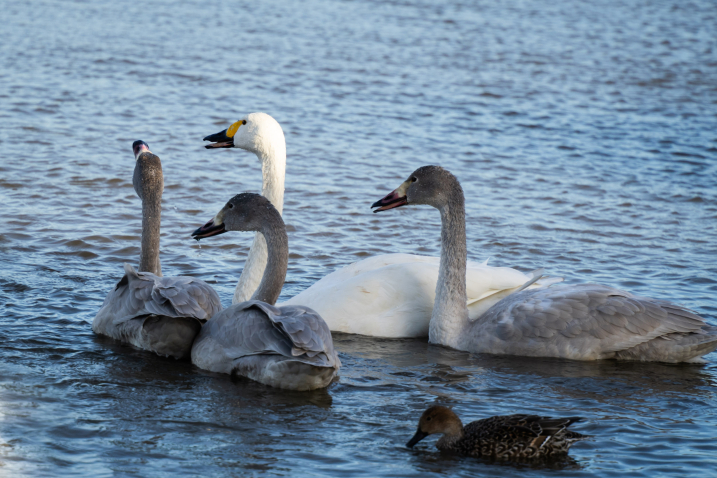
Bewick's swans - credit Amy Alsop
Numbers of Bewick’s swans on the reserve are currently showing 26% cygnets which is the highest percentage of juveniles seen at Slimbridge since 1966. This winter has seen particularly large broods, with all of these families having 4 cygnets each; pair Shoon and Shone, pair Orkney Reid and Doodled who have not been seen since the winter of 2016, pair Turlach and Tramore, as well as a lone parent Fedora. Another large family has included individuals Sisask and Urmas with 3 cygnets, Sisask was last at Slimbridge as a single adult in the winter of 2017.
It is believed it has been a successful year due to the weather conditions on the breeding ground in the Tundra – the weather has been warm and stayed warm with autumn not coming too early.
Bewick’s lay between 5-6 eggs and often have 1-3 cygnets, it is rare for groups of 4-5 cygnets to complete a successful migration journey to Slimbridge. The eggs are laid in May, hatch mid-June and then have 29-30 days incubation. The migration journey starts around middle to the end of September.
As of mid-January, families present on site at Slimbridge have included 4 families each with 4 cygnets, 1 family with 3 cygnets, 3 families with 2 cygnets and 4 families with 1 cygnet.
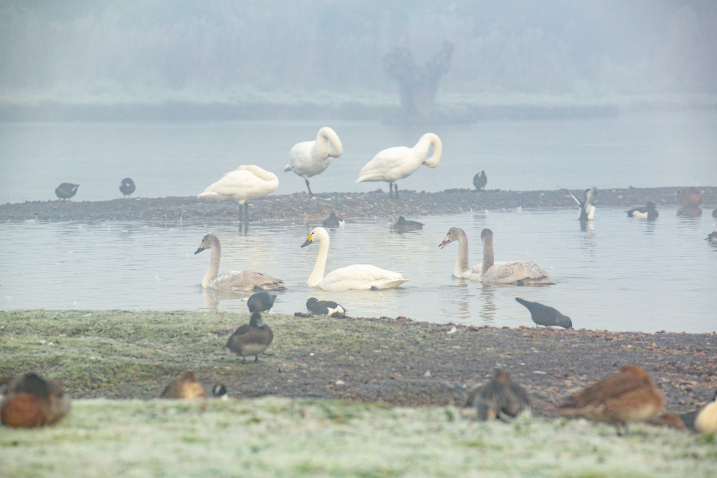
Bewick's swans on Rushy Lake - credit WWT
As WWT celebrated its 75th Anniversary last year, the successful breeding season of Bewick’s cygnets at Slimbridge is a timely reminder to the work of WWT founder, Sir Peter Scott. Scott dedicated much of his time watching and studying Bewick’s swans. He was the first person to notice that each bird has a unique bill pattern making it possible to identify individuals. The WWT conservation team who are based at Slimbridge have been using this technique to identify and record individual Bewick’s swans for more than 50 years. Over that time, the comings and goings of individuals and family dynasties has led to over 10,000 swans being recorded, one of the longest single species study that has been researched.

Bewick's swans bill patters by Sir Peter Scott
Bewick’s tend to be long-lived, but usually only two or three cygnets per family make it to their wintering sites in northwest Europe, and less than half of the population makes a breeding attempt each year. Numbers decreased from around 29,000 in 1995 to approximately 20,000 recorded in 2015, and conservationists are still trying to confirm the reasons for the decline. There is no clear picture emerging relating to whether the problem lies with poorer breeding or higher mortality, or indeed both. Possible reasons for the decline could be lower survival rates through illegal hunting and/or collisions with man-made structures such as power lines.
WWT works to support field conservation work for the protection of Bewick’s swans and for the vital wetlands they need to survive. WWT supports the Swan Champions initiative out in Arctic Russia. Concerns for the fate of Bewick’s swans among local residents has promoted them to start an initiative to unite scientists, hunters and the public in championing swans and their wetland home while reducing the hunting of swans. This network of people includes prominent figures representing indigenous groups, conservation organisations, academic and educational institutions, tourism and agencies and members of the regional government. Activities focus on improving the ability of hunters to recognise protected waterbirds and encouraging them to follow the laws that protect them.
For the best up close views of the Bewick's swans at Slimbridge, before they head back to Arctic Russia, head to the Peng Observatory daily at 4pm for the Wild Bird Feeds or watch them live from the Rushy webcam.
Cover photo credit Rebecca Taylor
